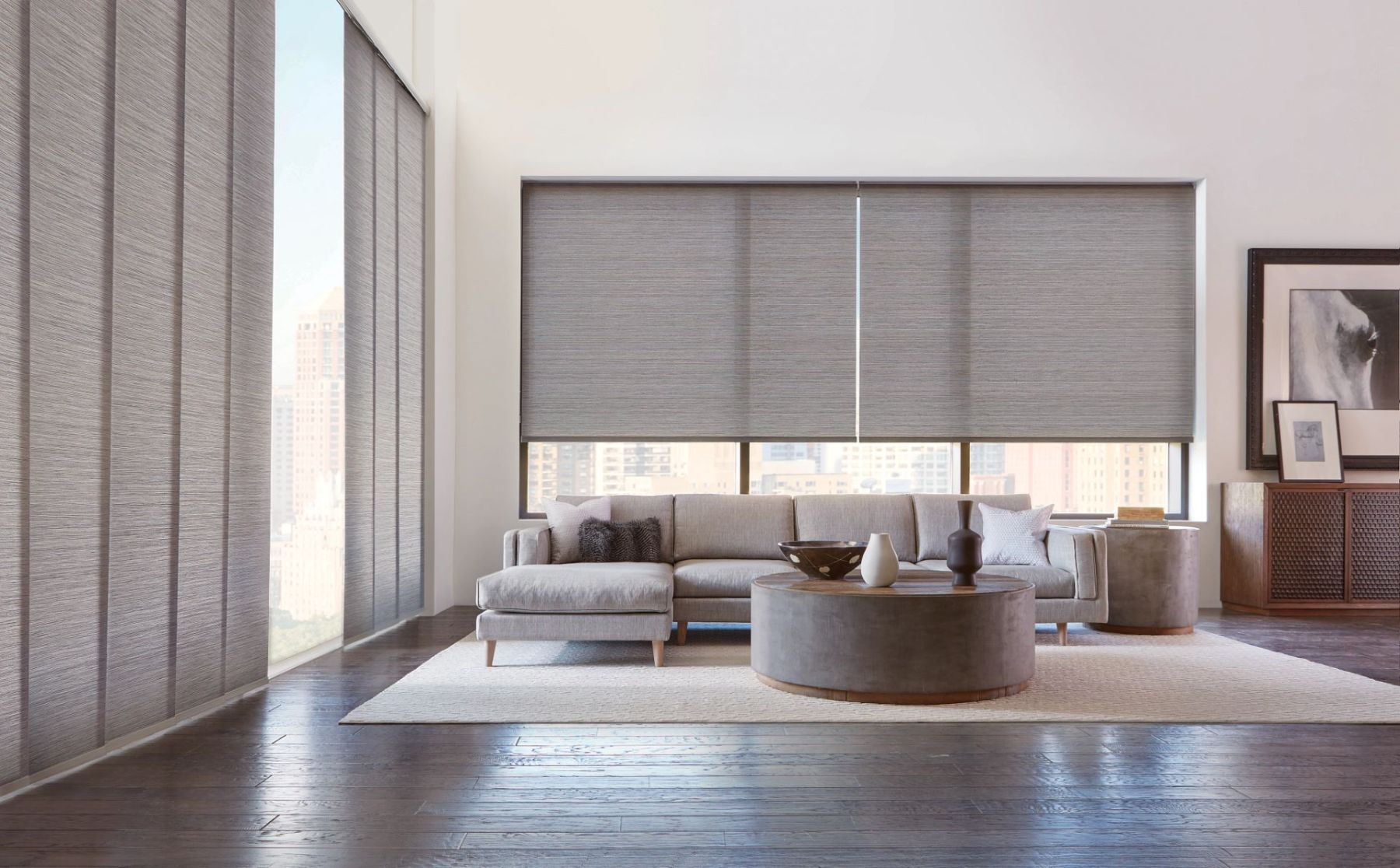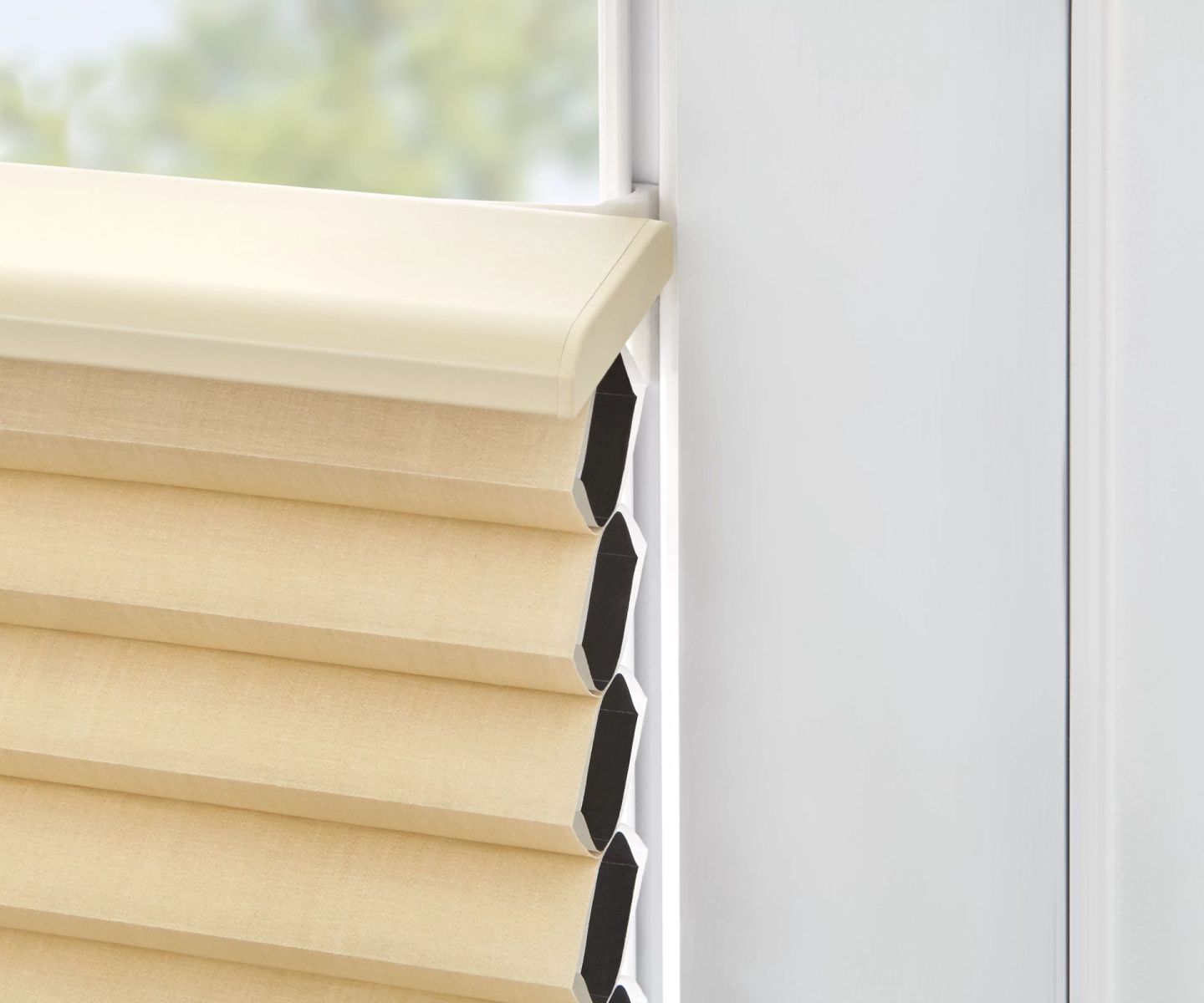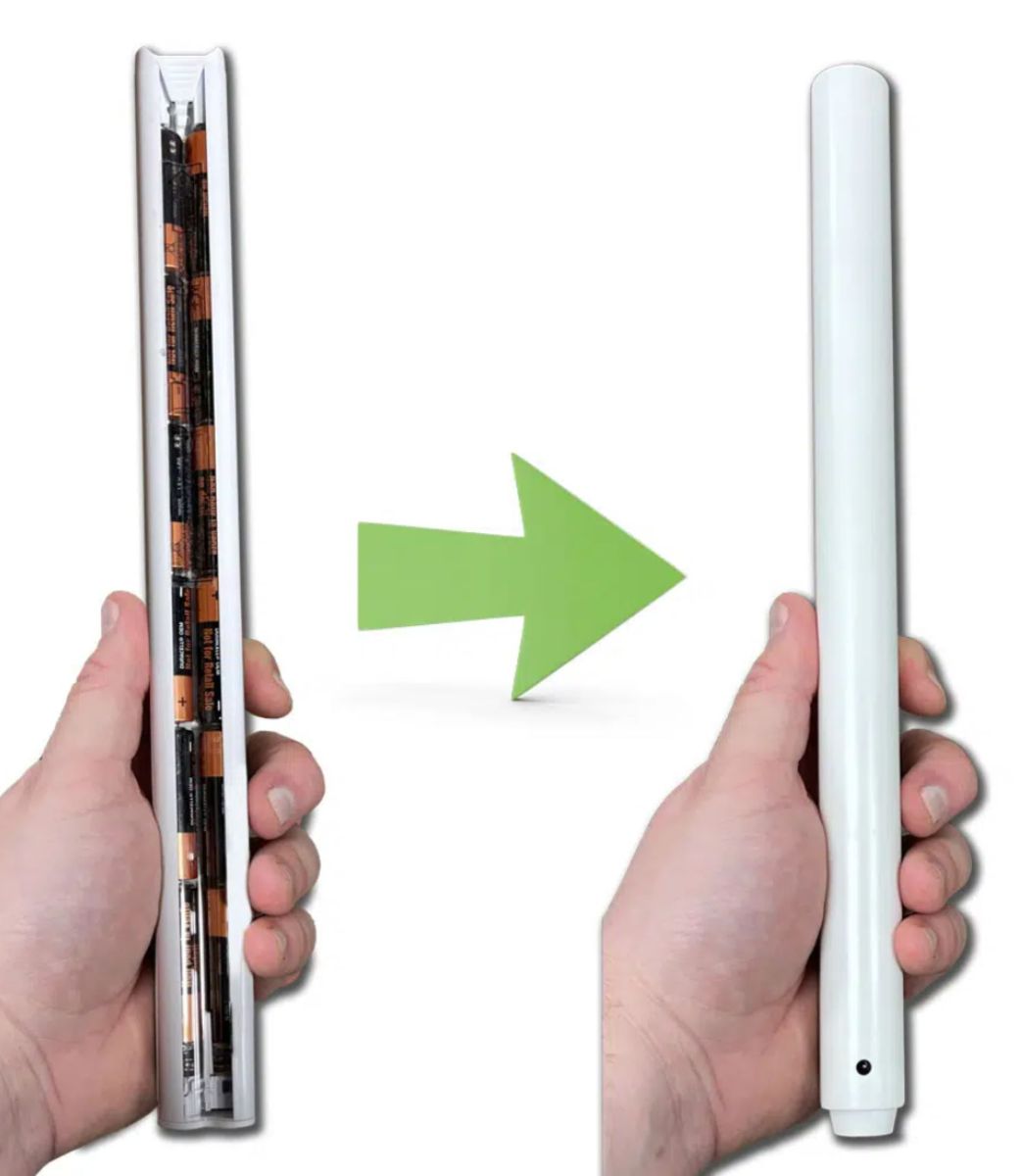Covering wide windows with blinds presents a few key challenges: weight, size limitations, and operating mechanisms. Large blinds can be very heavy, making them difficult to lift and operate, especially for taller windows. Additionally, many blinds have size restrictions, and very wide windows may require multiple blinds or alternative solutions like vertical blinds or sliding panels.
-
Tilt & Turn Windows
It can be challenging to cover tilt and turn windows with blinds because their unique inward-opening mechanism can be obstructed by standard blinds. Traditional blinds are designed for windows that open outward or up and down, not inward at the top or like a door.
Meet TrackGlide. Sleek tracks run along the edges of the window frame, allowing window shades to operate no matter the position of the window. Available exclusively with Duette honeycomb shades, you can enjoy light control, reduced glare, and privacy. You’ll also have the option to choose top down bottom up in addition to the comfort of these insulated shades.
Features
- Cover Tilt Turn Positions
- Enjoy Top Down Control
- Room Darkening Available
- Cordless Design Improves Safety
No Drilling with this Narrow Track
Oftentimes, homeowners feel overwhelmed when they have tricky windows to cover. Shallow window depth, low profile glass doors, tilt turn windows…these are just a few things we deal with every day. TrackGlide is an amazing solution for those windows that seemed impossible to cover. The narrow track of this system adheres along the edge of the frame–not on the glass–for a “no drill” installation.
-
Travelling Wands
A traveling wand is used to open, close, and sometimes tilt window coverings like draperies and vertical blinds. It eliminates the need for cords, making operation safer and easier. For draperies, the wand is attached to the drapery hooks and used to slide the curtains along the rod. For vertical blinds, the wand rotates the vanes to control light and privacy and also traverses the blinds open and closed.
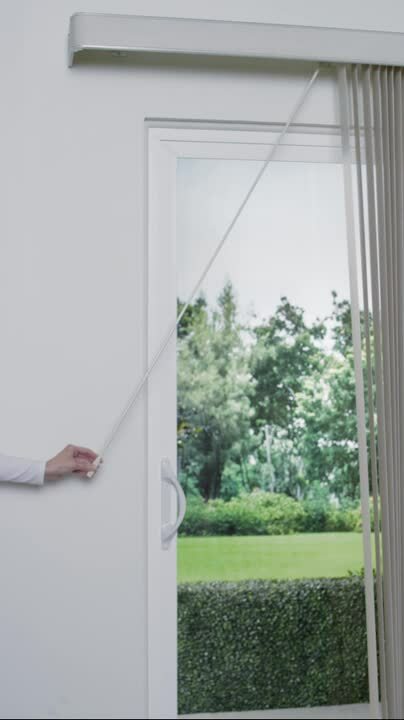
-
Top Down/Bottom Up
People love top-down/bottom-up shades because they offer a unique combination of light and privacy control, allowing for flexible light management and maintaining privacy simultaneously. This design allows you to adjust the shade from the top or the bottom, or both, providing options not available with traditional blinds.
Top Down Features
- Daylighting Across the Ceiling
- Interior Protection from Harsh UV Rays
- Privacy with Natural Light
Natural light improves your mood & the atmosphere of your home. But, what about privacy? Even more, direct light enters, increasing the temperature and causing glare. It’s time you said “enough is enough” with top down bottom up shades. Most of the window stays covered for privacy and light control, while natural light flows in across the ceiling to illuminate the space. Enjoy the ideal balance of light & control in your home.
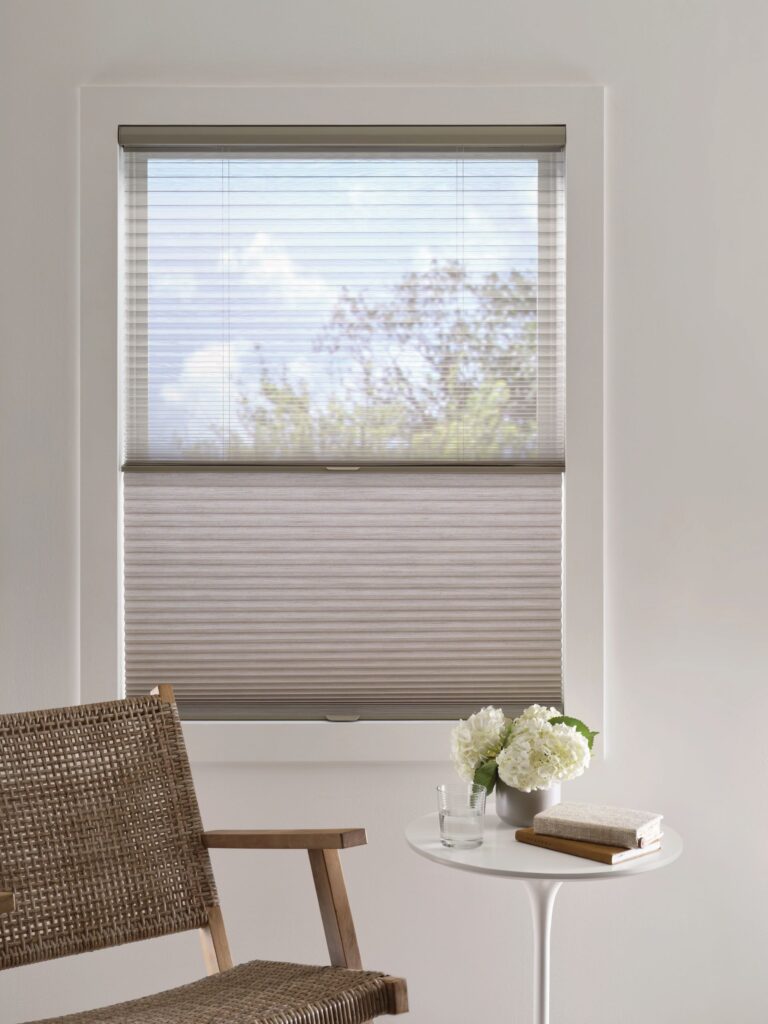
Daylighting
Natural light crosses the ceiling and illuminates the space. This is called daylighting, and it’s a well-loved feature of top down shades. Just by lowering your shades from the top, you can have all the benefits of covered windows while enjoying mood-boosting sunshine. Reduced glare, no direct rays in your eyes, privacy and energy savings.
Privacy
Just because you have street-level traffic outside your windows, doesn’t mean you have to give up privacy. Not only that, but you don’t have to give up your sky views or natural light, either. Bring the shades down enough that you can have the best of both worlds–a cozy, private feeling on the inside with natural light that easily puts you in a good mood.
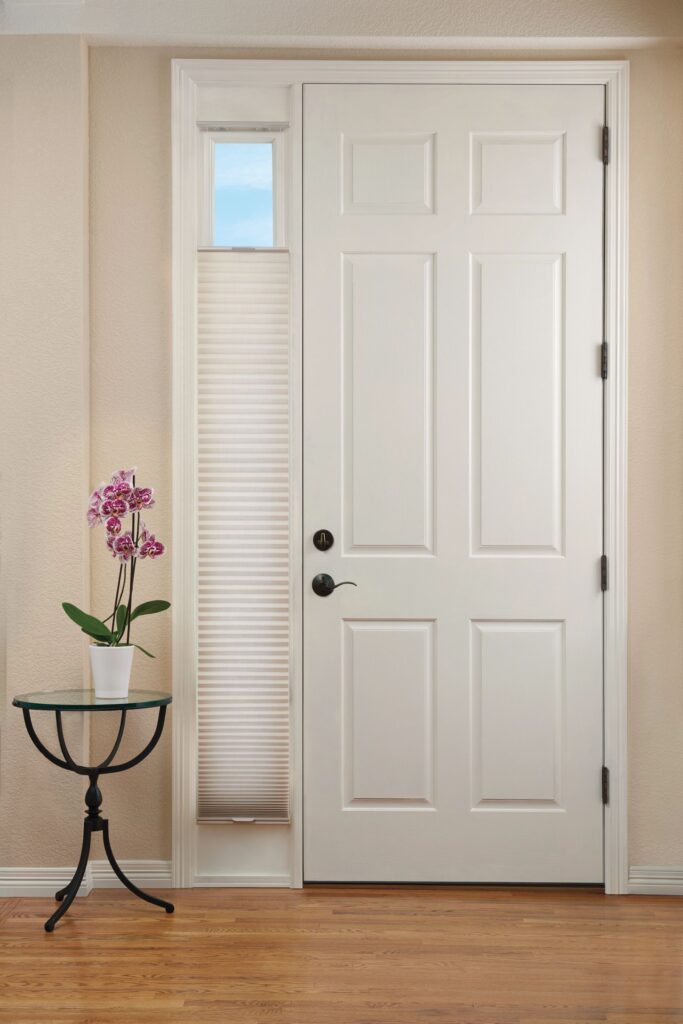
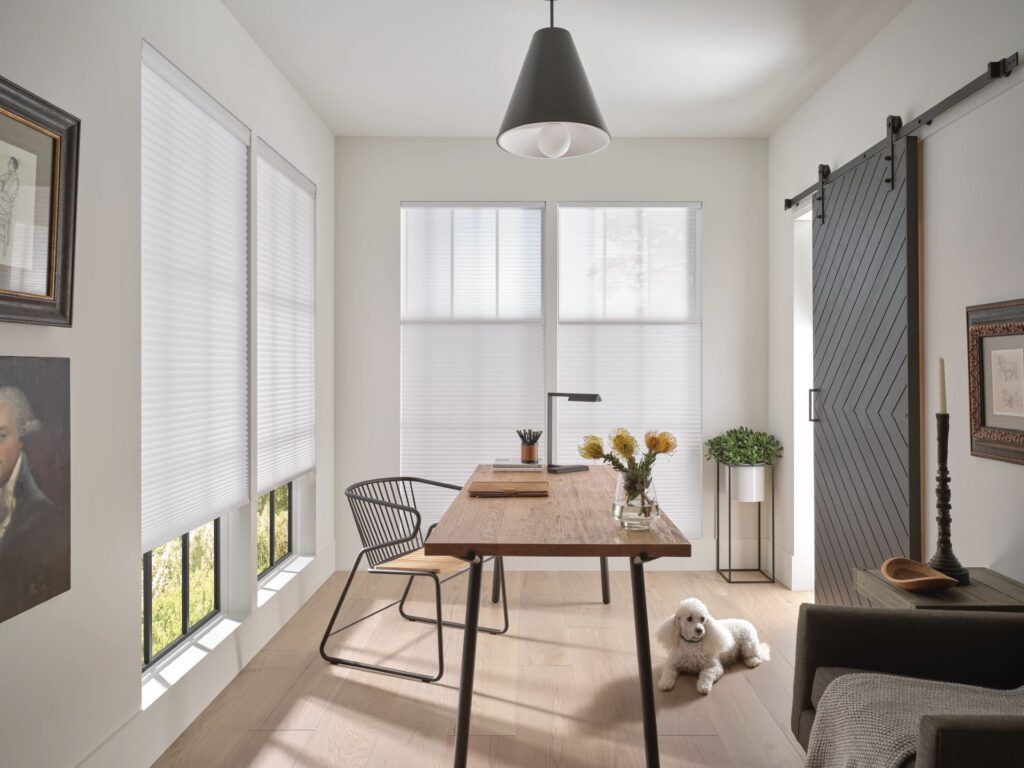
Custom Adjustments
Put your shades right where you need them when you combine the Top Down/ Bottom Up feature with PowerView Motorization. Lower from the top. Raise from the bottom. Lower from the top AND raise from the bottom. It’s customization at each and every window that makes these shades so unique. You design the way your room looks and feels. Experience a personalized atmosphere you will love!
-
Springrise
This cordless system is used for raising and lowering horizontal blinds. It uses a spring-loaded mechanism to keep the bottom rail under tension, allowing the blind to automatically retract to the top of the window when released from it hold-down brackets. The blind is lowered by pulling the bottom rail down and securing it into the brackets at the bottom of the window.

-
Shrouds
A shroud that covers the chain on a window covering, like a chain guard, is designed to enclose the operating cord or chain loop, making it safer, especially for homes with children and pets. To operate a window covering with a shroud, you usually raise or slide the shroud up to expose the chain or cord, allowing you to raise or lower the blinds or shade. When you’re finished, you lower the shroud back down to cover and secure the cord or chain.

-
Retractable Cords
A retractable cord lift system is a cordless operating system for window coverings that uses a retractable cord or wand. To operate, you pull down on the cord or wand to lower the shade and pull up to raise it. The cord remains a consistent length, and the system is considered safer for homes with children or pets.

-
Push Button/Band Route
This cordless lift system option is available on some Wood and Faux Wood blinds. It is also used to allow for a top down bottom up option on some Honeycomb shades. It uses a button on the bottom bar which when depressed allows the blind to raise or lower.
In Canada, these blinds and shades will operate with plastic bands through the routed holes to offer enhanced safety for children and pets, by replacing the standard lift cord with a child-safe band.

-
Power Wands
Power wands on window coverings offer a convenient, cordless way to control motorized blinds and shades. They typically feature buttons for up, down, and stop/favorite positions, and some can be programmed for incremental adjustments. The wand sends a electronic signal to a motor within the shade or blind, causing it to move.
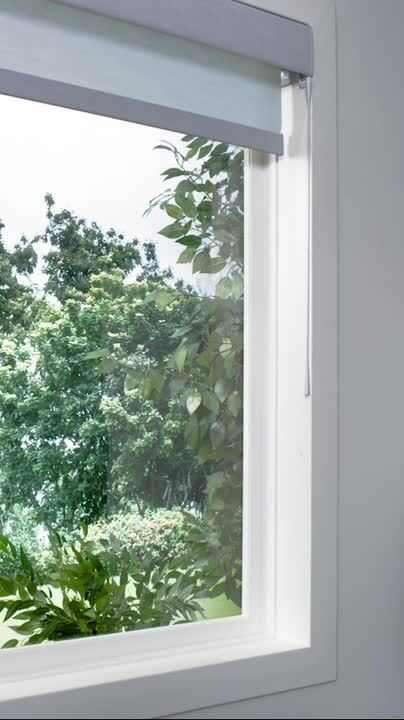
-
Power To Your Shades
Motorization has become a popular choice for homeowners. Once you have decided to choose a motorized blind or shade, you will also need to determine what power source will be the best choice. Battery operated blinds are the most common, both standard or rechargeable batteries are available. Another option is a plug in low voltage transformer. Based on your window covering needs our designers can help determine which power source will work the best for your particular situation.
Homeowners in the building stage have a unique advantage to wire their homes for window coverings, allowing the blinds and shades to run off of low voltage wiring. Wiring the window coverings provides a reliable power supply. You’ll never have to worry about replacing batteries, as hardwired blinds draw power directly from your home’s electrical system.
Superblinds is known for our expertise in wiring for window coverings. We work with well established brands such as Lutron and Hunter Douglas who provide quiet, top quality motorized products. We can guide you through the process and work with your electrician to the projects completion. Call us or visit our showroom for more information.
Battery-wands
Image 1 of 4Standard battery wands use lithium batteries. A more environmentally friendly option is a rechargeable battery wand. In both cases the battery wand is generally attached to the back of the shade headrail. If the window is accessible the wand can be easily removed to either replace the batteries or charge the wand when necessary. Choosing rechargeable batteries offer the additional options of continuous solar charging and the selection of an internal battery on some window covering products.

